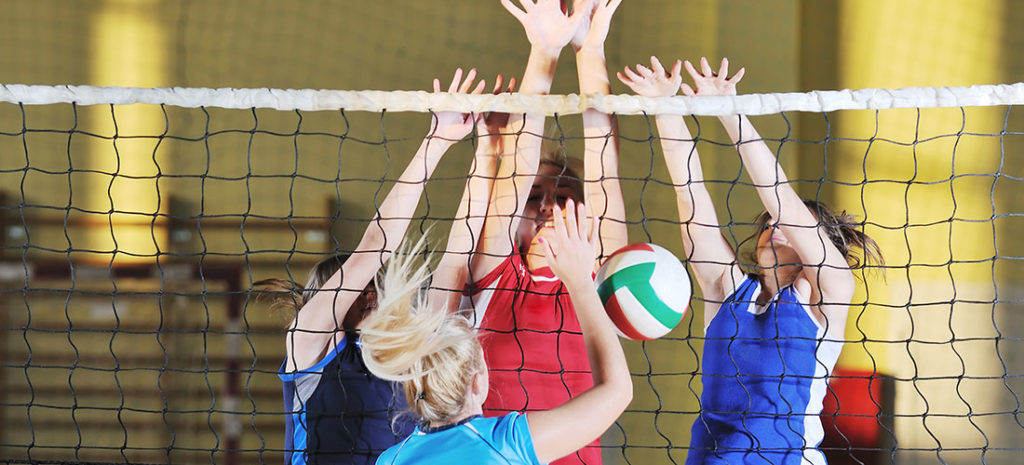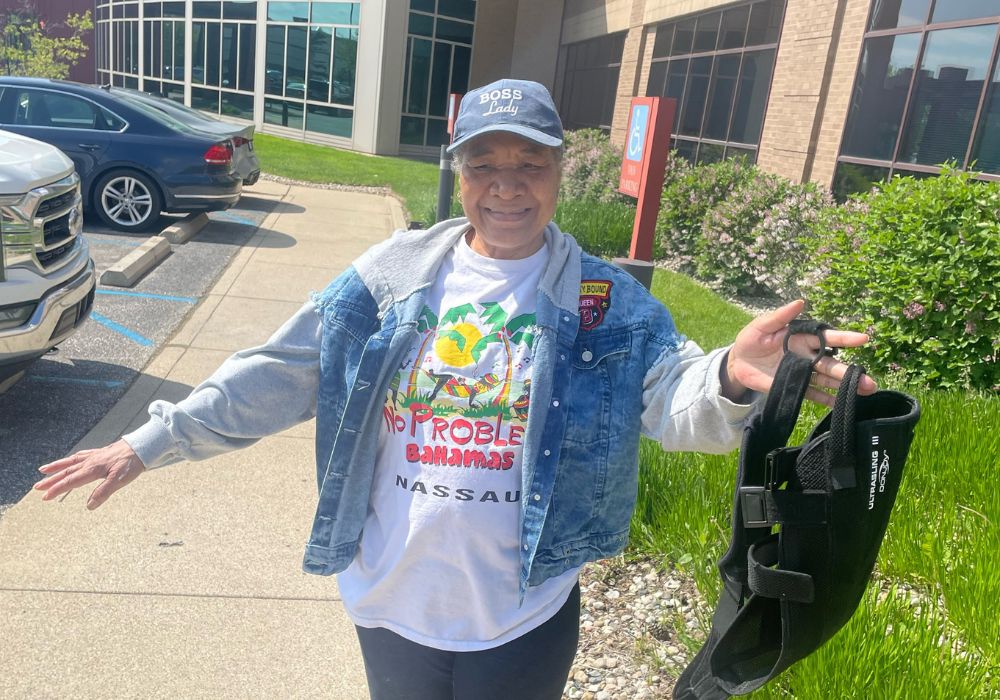THIS POST IS PART OF THE ULTIMATE GUIDE TO SPORTS MEDICINE
The shoulder is the most commonly dislocated joint in the body and is usually associated with contact sports, including:
- Football
- Basketball
- Wrestling
- Gymnastics
- Skiing
According to Dr. Mark DiLella, an OrthoIndy sports medicine specialist, a shoulder dislocation is a complete separation of the ball (humerus) and cup (glenoid) joint surfaces.
“Most times a shoulder dislocation is a result of an athlete falling on an outstretched arm or running into another athlete with their outstretched arm,” said Dr. DiLella. “Shoulder joint dislocations are usually a very painful experience; the patient usually braces the arm at their side due to pain and shoulder muscle spasm.”
Shoulder dislocations
Dr. DiLella added that anterior shoulder dislocations are usually the most common. In anterior dislocations the ball of the humerus is sometimes noticeably prominent over the chest in front of the shoulder, leaving the back of the shoulder blade more noticeable with a hollow space under the lateral shoulder.
“In some violent dislocation the nerve structures surrounding the shoulder joint can be stretched giving rise to numbness, tingling and strength loss in the arm,” said Dr. DiLella.
A shoulder dislocation is diagnosed by a physical exam. Usually the exam reveals a deformity at the shoulder. Pain and limited shoulder motion are also very common symptoms.
“An X-ray of the shoulder at several angles is sometimes needed to determine the severity of the shoulder dislocation,” said Dr. DiLella. “An X-ray can also be helpful to evaluate the shoulder for additional fractures, to determine the direction of the tear and to develop a plan of treatment.”
According to Dr. DiLella, shoulder dislocations usually require urgent care, but not necessarily a trip to the emergency room.
“Some shoulder dislocations that are complicated by additional fractures or neurologic or vascular injury which may require surgical relocation,” said Dr. DiLella. “However, most shoulder dislocations can be relocated without surgery. Additionally, patients usually require some relaxation medication to overcome the associated shoulder spasms connected with a dislocation.”
Recovery
Depending on the particular sport an athlete participates in, he or she can usually return to their sport in four to six weeks. This allows time for pain and swelling to resolve and time for an athlete to work on regaining strength.
“In general, athletes that experience shoulder dislocations in ‘over-shoulder’ sports, such as swimming, volleyball and gymnastics, will take longer for rehabilitation,” said Dr. DiLella. “Furthermore, chronic shoulder instability, when a shoulder is easily re-dislocated, is common following shoulder dislocations in young athletes, usually less than 25 to 30 years old.”
To avoid a shoulder dislocation an athlete should perform exercises that strengthen the rotator cuff and stretch before any activity.
To schedule an appointment with Dr. DiLella, please call 317.884.5165 or learn more about shoulder treatment at OrthoIndy.
Schedule an appointment
Your well-being is important to us. Click the button below or call us to schedule an appointment with one of our orthopedic specialists. If your injury or condition is recent, you can walk right into one of our OrthoIndy Urgent Care locations for immediate care. For rehabilitation and physical therapy, no referral is needed to see one of our physical therapists.





